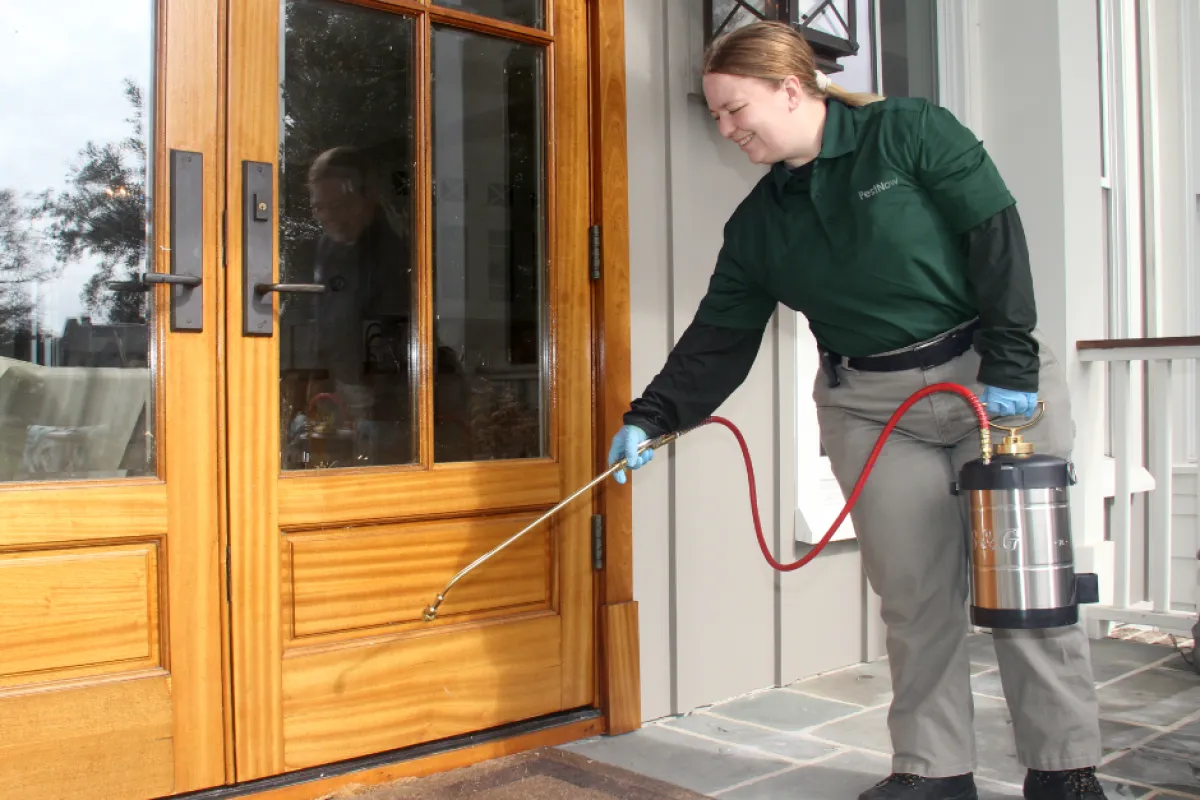Experienced A1 Exterminators Charlotte NC - Rapid and Trustworthy Solutions
Experienced A1 Exterminators Charlotte NC - Rapid and Trustworthy Solutions
Blog Article
Bed Pest Treatment Malfunction: Comparing Chemical Vs. Non-Chemical Solutions
In the realm of parasite control, especially when dealing with the persistent issue of bed insects, the choice between chemical and non-chemical treatment options can be a pivotal one. Both techniques offer distinct benefits and downsides, affecting variables such as performance, security considerations, and total price. By taking a look at the nuanced details of each technique, a more clear understanding of which course to go after in resolving a bed bug invasion can be acquired.
Effectiveness of Chemical Treatments
Chemical treatments for bed pest problems have been extensively recognized for their fast and potent effectiveness in getting rid of these insects. When thinking about the efficiency of chemical therapies, it is crucial to comprehend that they can give a extensive and fast service to a bed insect trouble. Specialist pest control men typically depend on insecticides to target bed insects at various stages of their life process, including eggs, grownups, and fairies. These chemicals normally function by disrupting the bed bugs' nerves, bring about paralysis and eventual fatality.
Moreover, chemical therapies have the advantage of providing recurring impacts, meaning that they can continue to eliminate bed pests also after the initial application. This recurring activity is particularly valuable in combating any possible re-infestations. Furthermore, the fast activity of chemical treatments can bring relief to individuals dealing with severe bed insect problems, allowing them to reclaim control of their living spaces rapidly.
Safety Interest In Chemical Solutions
One vital facet that calls for cautious consideration when using chemical remedies for bed bug treatment is ensuring the safety of occupants and the environment. Exposure to certain chemicals made use of in bed pest therapies can lead to respiratory system problems, skin inflammation, or other adverse reactions, especially in people with pre-existing problems or sensitivities.
Furthermore, the environmental influence of chemical services is one more considerable consideration. Some pesticides used in bed bug therapies may be damaging to useful insects, wild animals, and environments if they leach right into the soil or water supply. It is important to utilize chemical therapies sensibly, complying with safety standards, and thinking about less poisonous options to alleviate these risks and make certain the risk-free and effective monitoring of bed pest invasions.
Benefits of Non-Chemical Techniques
Thinking about the possible safety and security issues and environmental influence associated with chemical services for bed insect treatment, checking out non-chemical approaches provides an appealing option with numerous distinct benefits. Non-chemical therapies are eco pleasant, as they do not add to air or water pollution, wikipedia reference making them a sustainable choice for insect control.
Additionally, non-chemical services can be efficient in targeting bed bugs, consisting of hard-to-reach locations where chemical therapies may not penetrate. Techniques such as warm therapy, vacuuming, vapor cleansing, and cushion coverings give complete elimination without making use of dangerous chemicals. Additionally, non-chemical strategies can be less turbulent, needing minimal preparation and permitting quicker reentry right into dealt with locations. Overall, opting for non-chemical bed pest treatment methods not only focuses on safety and environmental security but additionally guarantees comprehensive and efficient parasite control.
Limitations of Non-Chemical Treatments

Furthermore, non-chemical therapies often require several applications to accomplish successful removal. This can be lengthy and may not constantly ensure complete removal of all bed pests and their eggs, especially in hard-to-reach or covert places.
Moreover, the success of non-chemical therapies greatly depends on this post correct execution and thoroughness, which can be testing for individuals without professional know-how. Inadequate application of non-chemical techniques might cause incomplete removal, leading to persistent problems and the requirement for additional treatments.
Therefore, while non-chemical therapies have their advantages, it is vital to acknowledge these limitations and consider them when determining the most effective strategy for taking care of bed insect invasions.
Expense Comparison: Chemical Vs. Non-Chemical Options
Offered the limitations connected with non-chemical therapies, a necessary element to examine in the context of bed pest administration is the cost comparison between chemical and non-chemical choices. Chemical therapies generally entail the application of insecticides by specialists, which can vary from $250 to $900 per room, depending upon the seriousness of the invasion and the dimension of the area to be treated. In comparison, non-chemical treatments like heat treatment or steam can be a lot more expensive, with expenses varying from $1,000 to $6,000 for an entire home. While the first price of chemical therapies may appear reduced, multiple treatments might be required to totally eradicate the invasion, possibly boosting the overall cost. On the other hand, non-chemical alternatives might provide an extra sustainable and eco-friendly option, although they can be cost-prohibitive for some people. Eventually, when considering the expense of bed insect therapy options, it is very important to evaluate the in advance expenses against the efficiency and lasting sustainability of the picked method.
Conclusion

Thinking about the potential security concerns and environmental influence linked with chemical solutions for bed bug therapy, checking out non-chemical approaches presents an appealing alternative with numerous distinctive benefits.Offered the limitations associated with non-chemical treatments, a crucial facet to evaluate in the context of bed bug administration is the price comparison in between chemical and non-chemical choices. In comparison, non-chemical therapies like heat treatment or steam can be a lot more expensive, with expenses ranging from $1,000 to $6,000 for an entire home. While the initial expense of chemical therapies may appear lower, numerous therapies may be needed to completely eradicate the infestation, potentially enhancing the general cost.In final thought, when contrasting chemical and non-chemical bed pest therapy choices, it is crucial to think about performance, safety, advantages, limitations, and price.
Report this page